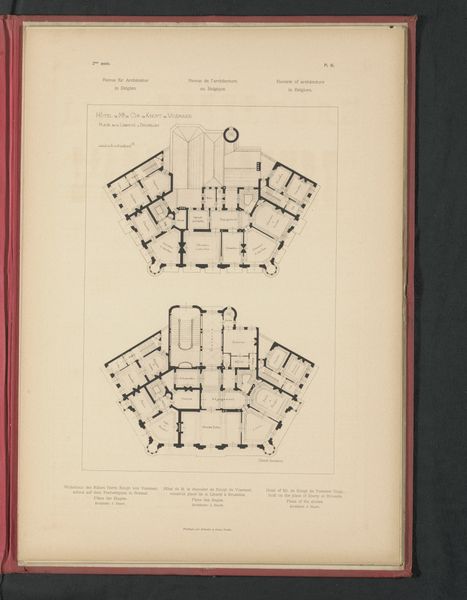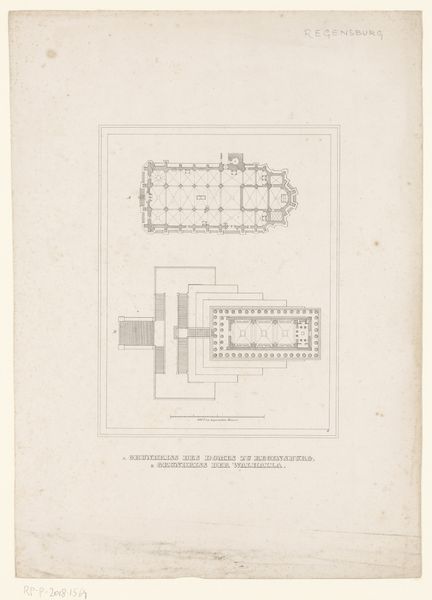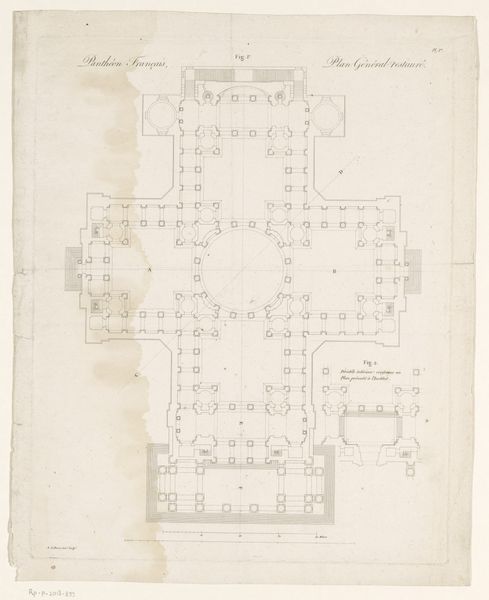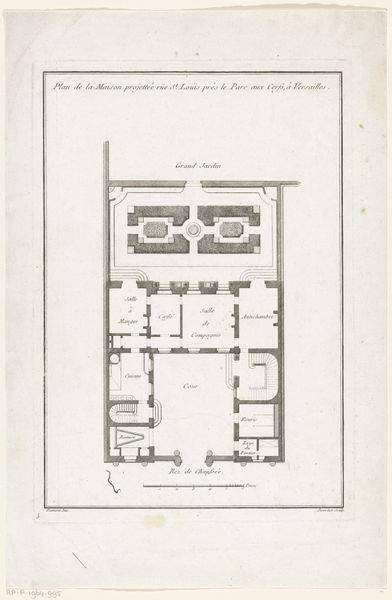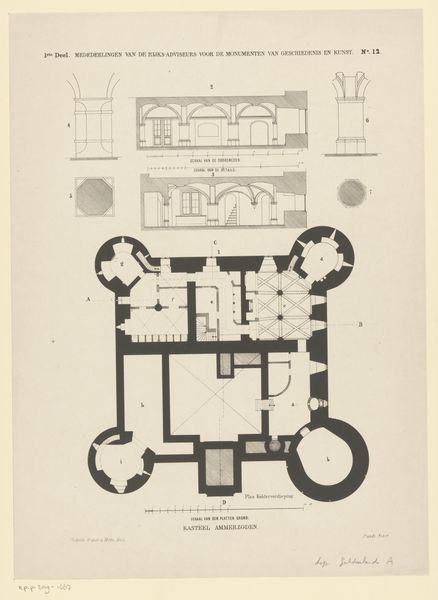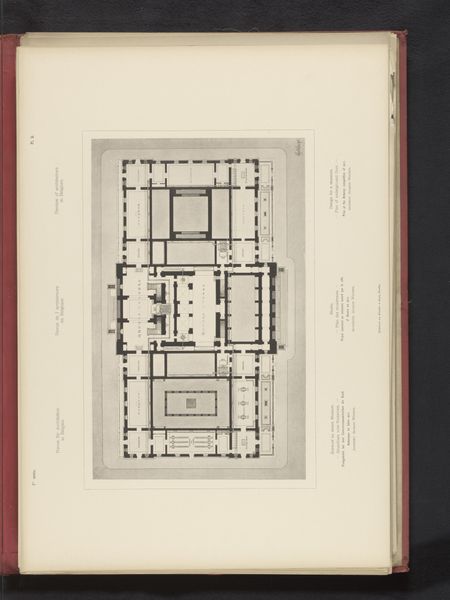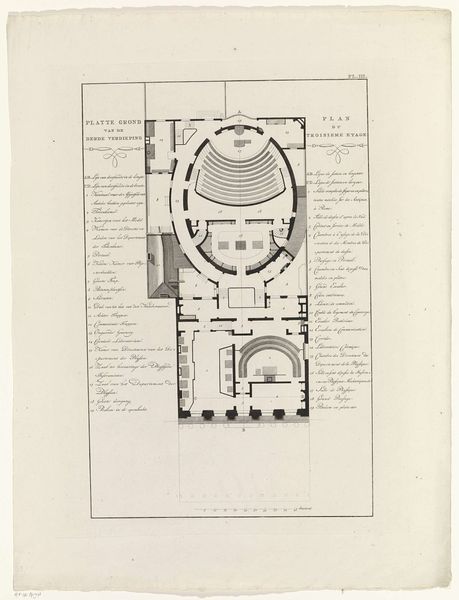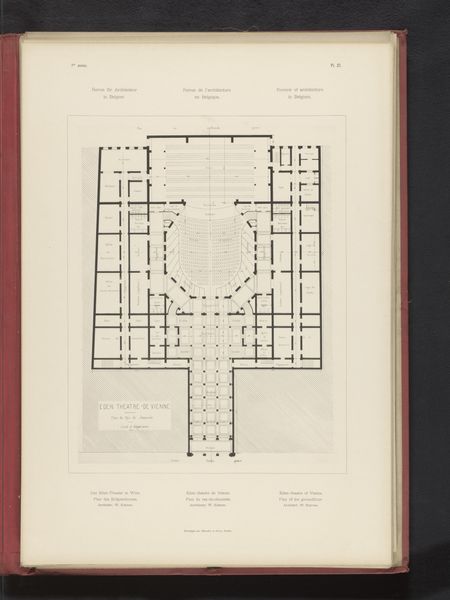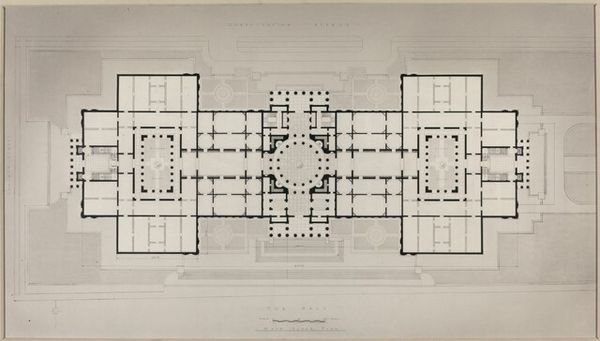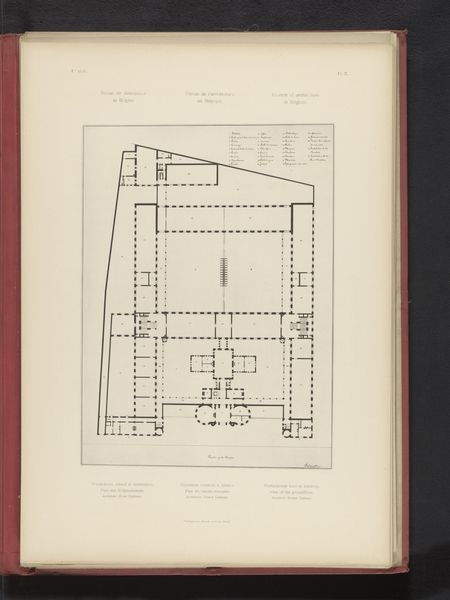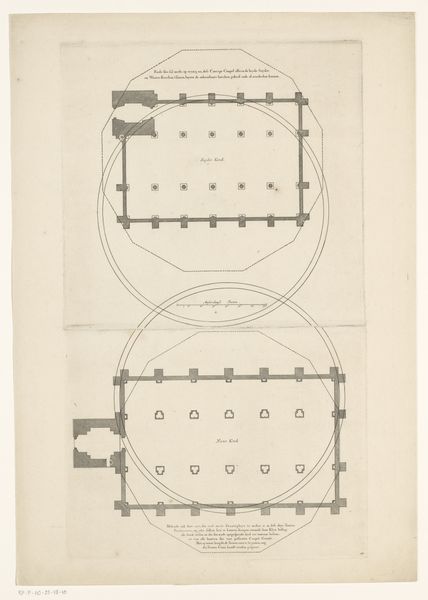
drawing, print, etching, paper, architecture
#
drawing
#
medieval
# print
#
etching
#
paper
#
geometric
#
architecture
Dimensions: 545 mm (height) x 444 mm (width) (monteringsmaal), 520 mm (height) x 390 mm (width) (plademaal)
Editor: Here we have an etching from 1833, "Roskilde Domkirke. Grundplan", depicting the floor plan of the Roskilde Cathedral. The anonymous artist uses clean, precise lines, and I'm struck by how this almost sterile depiction hints at the power dynamics embedded within religious architecture. What can you tell us about this work? Curator: It's tempting to view this simply as an architectural diagram, but let’s consider its context. In 1833, Denmark was grappling with its identity, particularly in relation to its history and the rise of national romanticism. Mapping a cathedral, a space that had wielded significant religious and political power since the Medieval age, becomes a way of documenting, and perhaps even controlling, a particular narrative. How might this map be seen as an act of claiming authority, visually circumscribing the influence of the church? Editor: So, it's less about pure architectural representation and more about… a statement? Curator: Precisely! Consider how architecture has historically been used to project power, from royal palaces to religious monuments. By creating and circulating this image, an implicit claim is made about who has the authority to define and interpret such spaces. The clean lines you mentioned contrast with the complex social history that the cathedral represents, and that contrast highlights the urge to simplify and control a richer, multifaceted cultural narrative. Does looking at it this way change your perception of the "sterile" nature of the print? Editor: It does. I see the clean lines less as neutral and more as deliberately imposing order, or maybe a kind of... intellectual possession of the cathedral. Curator: Exactly! It also opens up questions of accessibility and ownership. Who gets to interpret and understand this space? This print, as a mass-reproducible object, democratizes access in a way, but it also subtly dictates the terms of that access. It prompts us to question whose perspective is privileged. Editor: That’s a fascinating point. I hadn’t considered the power dynamics inherent in even a seemingly objective architectural drawing. Thank you! Curator: My pleasure. Remember, everything, including something as seemingly straightforward as a floor plan, carries embedded perspectives and ideologies.
Comments
No comments
Be the first to comment and join the conversation on the ultimate creative platform.
